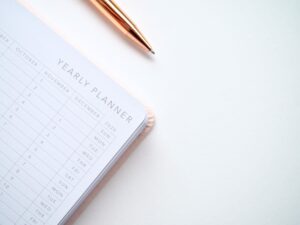Perfect Primary School Trip Planning
9 Essential Steps for a Successful Primary School Trip
Is there anything more exciting than planning a primary school trip? It’s the highlight of the year for many children and offers a chance to learn outside the classroom. But running a primary school trip takes careful organising, or it quickly descends into stressful chaos.
Whether you’re looking for a day out or week-long primary school trip we share our top advice to help you make your trip run smoothly.
1: Pre-visit the site
Have you ever risked taking your class somewhere you’ve never been before? Even if everything goes well, it’s a stressful experience. Pre-visiting is worth a few hours out of your schedule.
Reputable primary school trip providers are happy for teachers to visit, most expect you to come. But don’t drop in unannounced. Contact the provider as soon as possible and ask them for a suitable date for you to visit. It’s useful to orientate yourself and identify any potential problems.
Whilst you’re there, confirm the date and timings of your trip and make sure they’ve got all your contact details written down.
2: Create a timeline for your primary school trip
We know how busy you are. It’s easy to miss small trip deadlines and end up with a scramble to get everything ready on time. Use a calendar to list every important detail and give yourself a sensible deadline to work to.
- Booking transport: Coaches get booked up extremely quickly, so prioritise this. You’ll want to ask a few companies to quote to find the best deal.
- Writing a risk assessment: Check your school’s policy and standard templates to use. Leave time to submit it and check any edits needed.
- Getting final payments in: Remember time to chase late payments to avoid your school being out of pocket.
- Finalising details: Primary school trip providers often want menu choice, student groupings and activity selections made in advance.
- Confirming numbers: Check your final date for changing student and staff numbers to avoid paying for children who aren’t coming.
Create a spreadsheet to keep track of all the information you need such as medical and dietary information, consent forms, and payments. You can see at a glance who you need to chase for missing information.
3: Talk to parents
For primary school day trips you’ll want to send home a detailed letter explaining your trip, including dates, costs and equipment/ clothing needed. Many primary school trip providers have information booklets or you can direct parents to look at a page on the company website.
For residential primary school trips, parents are likely to have a lot more questions. It may be their child’s first night away from home. An easy way to share information is to run an information evening either in person or virtually using a platform like Zoom. Record your presentation and upload it to your school website for anyone who can’t attend.
Some primary school trip providers, like Wildchild, are happy to come and talk to parents for you. It’s helpful for answering tricky questions if you’ve not run the trip before. If you run the same trip every year, why not ask older students if they can share their experiences and advice?
4: Make your primary school trip affordable
Primary school trips can be very expensive for parents. Look for ways to reduce unnecessary costs and use payment plans for larger amounts. Giving parents as much notice as possible lets them start saving. Organise when different year groups have their trips to avoid parents with multiple children facing lots of payments due at the same time.
Often parents struggle with long kit lists such as sleeping bags, walking boots or wet-weather gear. There’s no need for everyone to buy new. Use your school social media accounts to promote sharing of equipment and ask parents to donate items their children have grown out of. Not only does it save money, but it’s great for greener living.
What you will do for families who don’t or can’t pay? Are there funds available to cover those you know are struggling financially? Will students who can’t pay be included? Most schools need a certain amount of payments for the trip to be financially viable.
5: Assess the risks
Risk assessments can feel like a pointless piece of paperwork, but they’re essential for minimising hazards. Get everything correct and ask those ‘what if?’ questions to look for potential problems. Often primary school trip providers have risk assessments you can use to supplement your school’s standard template.
 When you take students out of school, there’s a legal staff to student ratio. However, some providers may ask you for extra adults so students can be split into small groups. Check before the trip to ensure you have the correct number of adults needed.
When you take students out of school, there’s a legal staff to student ratio. However, some providers may ask you for extra adults so students can be split into small groups. Check before the trip to ensure you have the correct number of adults needed.
Don’t forget you’ll need first aiders. Whilst many providers train their own staff, this is not guaranteed. You’ll be expected to handle medicines and minor injuries whilst you’re away, so make sure you have at least one staff member with up-to-date training.
6: Plan timings
Nothing ruins a primary school trip like a classful of children sitting bored waiting for a coach. A miscommunication about timings can mean missing activities. Carefully check departures and arrival times and ensure the driver has full directions to collect you.
Look carefully at the overall structure of your primary school trip. What will each day look like? Is there empty time you must fill, or will instructors have the students all day? On residential trips, what time will they need to get dressed and go to bed? Have a few games and activities in reserve for any unexpected downtime.
7: Collect spare equipment
We know students and parents are responsible for their own belongings, but you don’t want your primary school trip ruined by the child who forgot to pack a sleeping bag. Collecting a small selection of spares to take with you is essential.
Useful items to take on a primary school trip:
- Water bottles
- Sleeping bags
- Clothing
- Wet weather gear
Remind parents to name everything. It’s inevitable that children will lose something whilst away and this helps reunite lost property once you’re back in school.
8: Set expectations for your primary school trip
Trips are exciting for all ages. For some, it’s a blurring between the freedom of a holiday and the rules of school. Children who have little experience of being away from home won’t naturally know how you want them to behave.
Talk to your class to set clear expectations about behaviour. Draw up a list of trip rules and explain why they need to follow them. Discuss worries and share information about bringing money, valuables or technology from home.
9: Talk with your team
Collect all the useful information you have and create a copy for every adult on your trip. Hold a quick meeting with staff and parent helpers before you depart to go through everything.
Things to include in your helper pack:
- Risk assessments
- Medical information
- Itinerary and timings
- General guidance
- Safeguarding information
- Groupings
Don’t assume that parent helpers will automatically know your safeguarding procedures. You’ll need to go through what they should do in different situations.
Summary
Primary school trips are an exciting opportunity for children to learn outside of the classroom. Planning them takes time, but getting it right means a stress-free adventure that everyone will enjoy.
If you’re looking for a primary school trip or day excursion close to the M25, get in touch with us or click here to find out more about our award-winning primary school trips
Recent Posts
- Why you should be insisting on LOtC for your school residential trips
- The impact of Nature deficit disorder and the preventative role schools can play
- Residential trips for secondary schools to ease transition
- Building character through primary school trips
- Six reasons why more schools are choosing UK school trips (spoiler alert: it’s not because of Covid!)
- School trips after the pandemic
- 5 winter outdoor learning activities for schools
- 5 ways to get more from your School Bushcraft Trip
- Residential trips to benefit learning
- Perfect Primary School Trip Planning
Blog home








